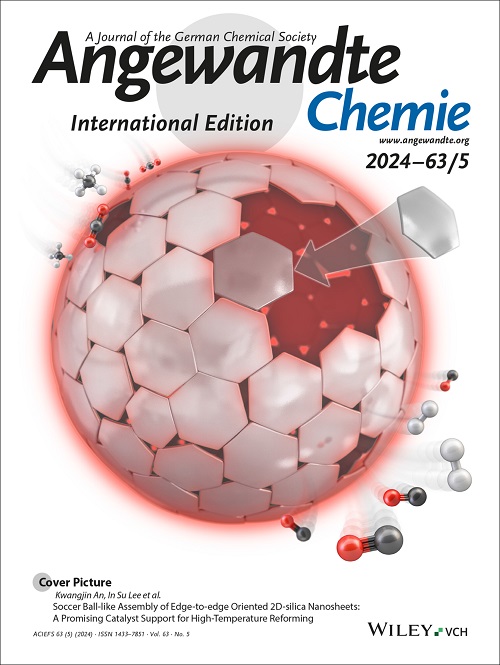铜定制钼镍催化剂促进氢氧化并抑制耐用燃料电池的寄生氧还原。
IF 16.9
1区 化学
Q1 CHEMISTRY, MULTIDISCIPLINARY
引用次数: 0
摘要
许多现有的策略都在努力减轻聚合物电解质燃料电池启动和关闭期间的逆流衰减(RCD),以避免阴极腐蚀,但增加的系统复杂性和成本是缺点。本文中,我们报道了通过掺杂铜对钼镍合金进行改性,使非贵金属电催化剂(mon3.6 cu0.4)能够有效催化氢氧化反应(HOR),而在碱性介质中对氧还原反应(ORR)无催化活性,使其成为燃料电池阳极的理想选择,因为可以克服设备启动/关闭期间寄生ORR引起的瞬时界面电位跳变。当催化剂组装在阴离子交换膜燃料电池的阳极时,与最先进的碳负载铂(Pt/C)催化剂相比,该催化剂的耐腐蚀能力大大提高。这些性能的基础表明,铜掺杂物增加了界面水的氢键以增强HOR,但减弱了分子氧的吸附,同时稳定了羟基的吸附以抑制ORR。本文章由计算机程序翻译,如有差异,请以英文原文为准。
Copper-Tailored Molybdenum-Nickel Catalyst Boosts Hydrogen Oxidation and Suppresses Parasitic Oxygen Reduction for Durable Fuel Cells.
Numerous existing strategies struggle to mitigate reverse-current decay (RCD) during startup and shutdown in polymer electrolyte fuel cells to avoid cathode corrosion, but the added system complexity and cost are drawbacks. Here we report that modification of a molybdenum-nickel alloy through the doping of copper enables a non-noble electrocatalyst (MoNi3.6Cu0.4) that efficiently catalyzes hydrogen oxidation reaction (HOR) while catalytically inactive toward oxygen reduction reaction (ORR) in alkaline media, making it ideal for fuel-cell anode because the instantaneous interfacial potential jump originated from the parasitic ORR during device startup/shutdown can be surmounted. The catalyst, when assembled in the anode of an anion exchange membrane fuel cell, manifests substantially improved corrosion-resistant ability compared with that of state-of-the-art carbon-supported platinum (Pt/C) catalyst. The basis for the achieved performances reveals to be the copper dopants that increase the hydrogen bonding of interfacial water for enhanced HOR, yet weaken molecular oxygen adsorption while stabilizing hydroxyl adsorption for ORR suppression.
求助全文
通过发布文献求助,成功后即可免费获取论文全文。
去求助
来源期刊
CiteScore
26.60
自引率
6.60%
发文量
3549
审稿时长
1.5 months
期刊介绍:
Angewandte Chemie, a journal of the German Chemical Society (GDCh), maintains a leading position among scholarly journals in general chemistry with an impressive Impact Factor of 16.6 (2022 Journal Citation Reports, Clarivate, 2023). Published weekly in a reader-friendly format, it features new articles almost every day. Established in 1887, Angewandte Chemie is a prominent chemistry journal, offering a dynamic blend of Review-type articles, Highlights, Communications, and Research Articles on a weekly basis, making it unique in the field.

 求助内容:
求助内容: 应助结果提醒方式:
应助结果提醒方式:


